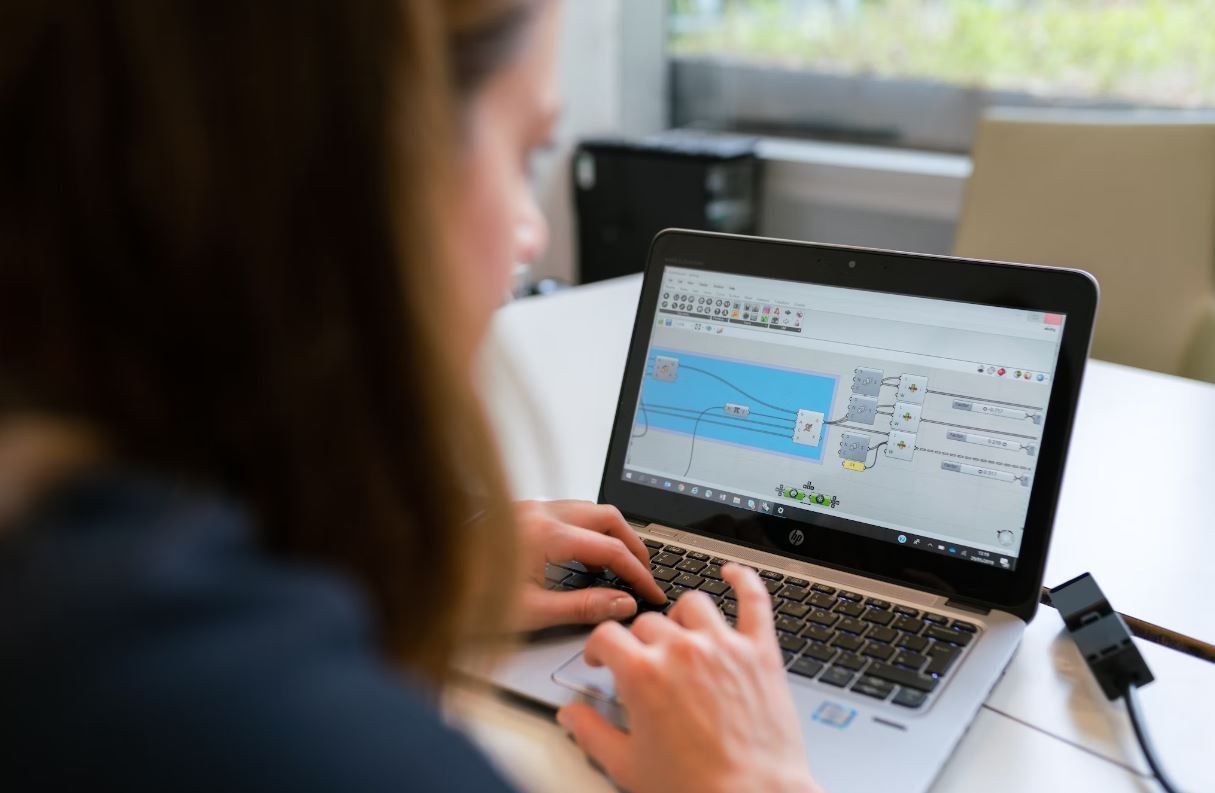When Does Language Begin?
Language is a fundamental aspect of human existence, enabling us to communicate thoughts, emotions, and ideas. But when does language begin? This question has intrigued researchers for centuries, as they strive to understand the emergence and development of language in humans.
Key Takeaways:
- Language acquisition starts at a young age.
- Early exposure to language is crucial for language development.
- Language milestones occur during specific stages of development.
- Linguistic environment plays a crucial role in shaping language skills.
**Studies suggest that language acquisition begins early in life, with infants as young as a few months old showing sensitivity to speech sounds and exhibiting vocalization patterns that resemble the native language(s) they are exposed to.** This early awareness of language sets the foundation for language learning and allows infants to gradually acquire vocabulary, grammar, and language comprehension skills.
During the first year of life, **babies start babbling, producing repetitive consonant-vowel syllables as they experiment with their vocal abilities.** This babbling stage, often accompanied by hand gestures and facial expressions, marks an important step toward language development. It is during this time that infants begin to understand the connection between sound and meaning.
As a child grows, their language skills continue to develop and become more sophisticated. By the age of two, children typically produce their **first words and engage in basic two-word expressions, such as “mommy go,” indicating their expanding vocabulary and grammatical understanding.** These early stages of language development demonstrate the remarkable ability of children to acquire language rapidly.
**One fascinating aspect of language acquisition is the critical period hypothesis, which suggests that there is an optimal time frame for language learning. During this period, typically occurring in early childhood, children are most receptive to language input and are able to master language skills more easily.** However, the exact duration and boundaries of this critical period remain subjects of ongoing research.
The Role of Linguistic Environment
**The linguistic environment a child is exposed to plays a significant role in language development.** Infants and children thrive in environments where they receive ample exposure to spoken language, engaging in conversational exchanges with parents, caregivers, and other individuals in their surroundings. This linguistic input facilitates vocabulary growth, grammatical development, and overall language proficiency.
Interestingly, **research suggests that even before birth, infants are already exposed to the rhythms, patterns, and prosody of their native language(s).** This exposure to language in the womb potentially primes the infant’s auditory system and enhances their ability to discriminate specific speech sounds, preparing them for language acquisition following birth.
Language Milestones
Language development follows a general timeline, with key milestones occurring at various stages of a child’s growth. Here are some notable language milestones:
- Babbling stage (around 6-8 months): Babies begin to produce repetitive syllables, exploring the sounds of their language.
- First words (around 12-18 months): Children produce their first recognizable words with meaning.
- Two-word stage (around 18-24 months): Children form two-word combinations to express simple ideas.
- Telegraphic speech (around 2-3 years): Children use phrases consisting of three or more words, emphasizing content words.
- Complex sentences (around 3-5 years): Children construct more complex sentences, using grammar and syntax rules.
Linguistic and Neurological Factors
**Language development involves a complex interplay of linguistic and neurological factors.** As children learn and use language, their brains undergo significant changes, with specific brain regions dedicated to language processing. Research in neuroscience has revealed that language development relies on the coordination of various neural networks and brain areas, highlighting the intricate nature of this cognitive process.
Tables of Interesting Data Points
| Language Milestone | Average Age of Achievement |
|---|---|
| Babbling stage | Around 6-8 months |
| First words | Around 12-18 months |
| Two-word stage | Around 18-24 months |
| Language Development Stage | Main Characteristics |
|---|---|
| Babbling stage | Repetitive syllables, experimentation with sounds |
| First words | Recognizable words with meaning |
| Two-word stage | Simple combinations to express ideas |
| Factors Influencing Language Development | Impact on Language Acquisition |
|---|---|
| Early exposure to language | Enhances vocabulary and grammar development |
| Linguistic environment | Facilitates language acquisition and proficiency |
| Neurological factors | Brain changes and specialized language processing regions |
Intricate Process of Language Development
**Language development is a remarkable and intricate process that unfolds throughout a child’s early years.** From the first coos and babbles to the formation of complex sentences, children progress through a series of stages that reflect their growing language skills and understanding.
The journey of language acquisition is influenced by numerous factors, such as early exposure to language, linguistic environment, and neurological development. Understanding the complexities of language development is key to supporting children’s language acquisition and providing them with the necessary linguistic stimulation they need to thrive.

When Does Language Begin?
Common Misconceptions
One common misconception surrounding the topic of when language development begins is that it starts only when a child begins to speak their first words. While speaking is a significant milestone in language acquisition, it is not the starting point. Language development actually begins much earlier, even before a child is born.
- Language development starts before birth
- Language development is a continuous process
- Language development includes non-verbal communication
From around the third trimester of pregnancy, a fetus can already hear the sounds of the outside world. The auditory system of the unborn child is functioning, and they can recognize and respond to various sounds, including their parents’ voices. Research suggests that prenatal exposure to language and sounds plays a crucial role in the development of linguistic skills later in life.
- Language development is influenced by prenatal exposure
- Pre-birth exposure to language impacts future language skills
- Parents can help cultivate language skills during pregnancy
Another misconception is that children acquire language only through explicit teaching or instruction. In reality, language learning is a natural and innate process that occurs spontaneously through exposure to language in the child’s environment. Children have an inherent ability to acquire language by unconsciously absorbing the speech and language patterns around them.
- Language acquisition is a natural process
- Language acquisition occurs through exposure
- Children have an innate ability to acquire language
There is also a misconception that language development follows a linear and uniform trajectory for all individuals. In reality, language development varies from person to person and can be influenced by genetic, environmental, and socio-cultural factors. Some individuals may reach language milestones earlier or later than others, and some may face challenges or delays in language development.
- Language development varies between individuals
- Genetic and environmental factors influence language development
- Language development can be uneven or delayed
Finally, it is important to recognize that language development is not limited to spoken words. Non-verbal communication, such as gestures, facial expressions, and body language, also plays a significant role in language development. Infants and young children rely on a combination of verbal and non-verbal means to communicate their needs, desires, and emotions before they fully develop their spoken language skills.
- Language development includes non-verbal communication
- Non-verbal communication is essential in early language development
- Children use a combination of verbal and non-verbal means to communicate

The Evolutionary Origins of Language
Language is a defining characteristic of human beings, setting us apart from other species. However, the exact origins of language remain a subject of ongoing debate among linguists and psychologists. Researchers have proposed various theories on when language began. The following tables provide interesting facts and data related to the development of language.
Theories on the Origins of Language
Many theories have been suggested to explain the origins of language, ranging from the idea that language emerged gradually over time to the hypothesis that it arose suddenly in a fully formed manner. The following table highlights some of the prominent theories and their key proponents.
| Theory | Key Proponent |
|---|---|
| Divine Origin Theory | John Locke |
| Gradual Evolution Theory | Charles Darwin |
| Innate Language Acquisition Theory | Noam Chomsky |
| Social Interaction Theory | Vygotsky |
The First Words Spoken by a Baby
The utterance of a baby’s first word is a significant milestone in language development. Here are some fascinating examples of actual first words spoken by infants around the world.
| Baby | First Word | Language |
|---|---|---|
| Emma | “Mama” | English |
| Pablo | “agua” | Spanish |
| Akari | “おいしい” (Oishii) | Japanese |
| Isabella | “gato” | Spanish |
Language Diversity Around the World
Languages come in diverse forms, with various structures and complexities. The following table showcases some unique languages from different corners of the world along with interesting linguistic features they possess.
| Language | Linguistic Feature | Location |
|---|---|---|
| Inuktitut | Ergative-Absolutive Alignment | Arctic regions of North America |
| Xhosa | Click Consonants | South Africa |
| Ithkuil | Elaborate Morphology | Constructed Language |
Language and the Brain
Our ability to speak and comprehend language involves complex neural processes. Here are some intriguing findings related to language and the brain.
| Language-Related Brain Region | Scientific Name | Function |
|---|---|---|
| Broca’s Area | Pars Opercularis | Speech Production |
| Wernicke’s Area | Superior Temporal Gyrus | Language Comprehension |
The World’s Most Spoken Languages
Languages vary in terms of the number of speakers they have worldwide. The table below illustrates the top five most spoken languages based on the number of native speakers.
| Language | Number of Native Speakers (approx.) |
|---|---|
| Mandarin Chinese | 1.2 billion |
| Spanish | 460 million |
| English | 380 million |
| Hindi | 340 million |
| Arabic | 310 million |
The Impact of Bilingualism on the Brain
Bilingualism and multilingualism can have fascinating effects on the brain and cognitive abilities. The following table explores the positive impacts of being bilingual.
| Benefit | Description |
|---|---|
| Cognitive Flexibility | Bilingual individuals show enhanced cognitive flexibility, allowing them to switch between tasks more effectively. |
| Increased Attention | Bilinguals exhibit better control over attention and are more skilled at filtering out irrelevant information. |
| Delaying Cognitive Decline | Speaking multiple languages has been linked to a reduced risk of age-related cognitive decline and dementia. |
Languages at Risk of Extinction
Unfortunately, many languages are endangered and face the risk of extinction. Here are some endangered languages that need preservation efforts.
| Language | Location | Status |
|---|---|---|
| Aymara | South America (Andean Region) | Endangered |
| Dusner | Indonesia | Critically Endangered |
| Manx | Isle of Man | Revived |
The Language Acquisition of Deaf Individuals
Deaf individuals can acquire language through sign languages, which are rich, complex linguistic systems. The table below features notable sign languages and their respective countries.
| Sign Language | Country |
|---|---|
| American Sign Language (ASL) | United States |
| British Sign Language (BSL) | United Kingdom |
| South African Sign Language (SASL) | South Africa |
In conclusion, the origins and development of language are complex topics. Researchers continue to explore various theories, study brain mechanisms involved in language processing, and delve into the diversities present in languages worldwide. Understanding language acquisition and its impact on cognition remains crucial for unraveling the mysteries of human communication.
Frequently Asked Questions
How do researchers define the beginning of language development?
Researchers generally agree that language development starts at birth. Although babies do not immediately start speaking, they begin to respond to sounds and show recognition of familiar voices, which are early signs of language acquisition.
What are the stages of language development in children?
Language development in children typically progresses through four main stages: the cooing and babbling stage, the one-word or holophrastic stage, the two-word stage, and finally, the telegraphic stage where children start using short sentences with basic grammar.
At what age do babies start forming words?
Babies typically begin forming simple words between the ages of 9 and 12 months. During this period, they may utter their first recognizable words such as “mama” or “dada.”
When do children normally begin speaking in sentences?
Most children begin speaking in sentences by around the age of 2. At this stage, their vocabulary expands rapidly, and they start combining words to express more complex ideas.
What factors influence language development?
Language development can be influenced by various factors, including genetic predisposition, exposure to language, cognitive abilities, and social interaction with caregivers and peers.
Is there a critical period for language acquisition?
Yes, there is a critical period for language acquisition, which is generally regarded as the first few years of life. During this period, children are most receptive to language input and have the highest capacity for language learning.
Can children learn multiple languages simultaneously?
Absolutely! Children have the remarkable ability to learn multiple languages simultaneously. In fact, exposure to multiple languages from an early age can provide several cognitive and linguistic benefits.
What are some red flags for delayed language development in children?
Some red flags for delayed language development in children include limited vocabulary compared to peers, difficulty understanding and following directions, and inability to form simple sentences by a certain age. However, it is best to consult with a healthcare professional for a proper assessment if concerned.
How can parents support language development in their children?
Parents can support their children’s language development by talking and reading to them frequently, creating a language-rich environment, engaging in conversations, and providing ample opportunities for social interaction with other children.
Are there any techniques to encourage language development in children with language delays?
Yes, there are various techniques that can help encourage language development in children with language delays, such as speech therapy, assistive communication devices, and implementing visual aids or gestures to support language comprehension.




